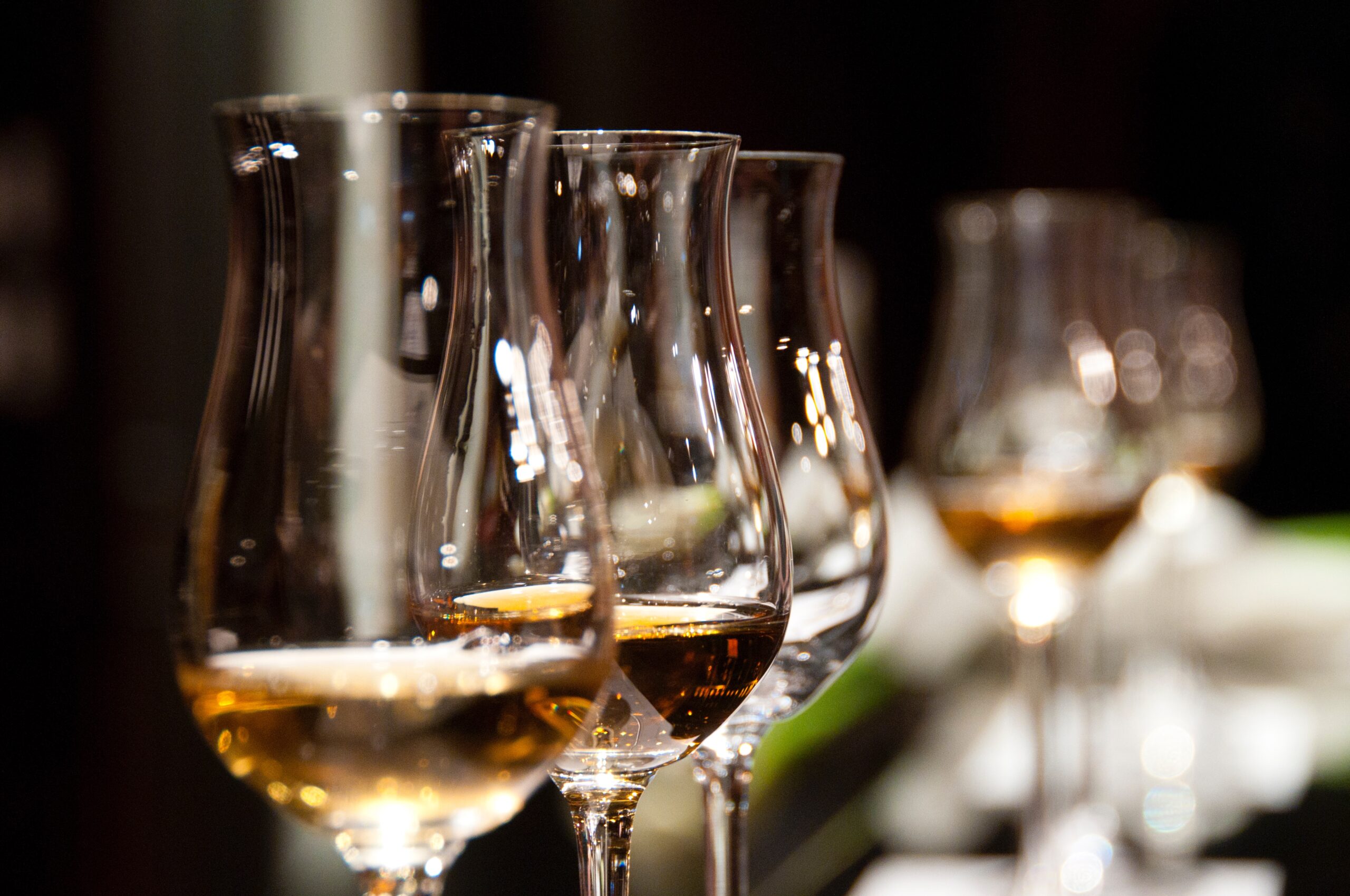1. Selecting your whisky
The most crucial aspect of any tasting is the whisky. They are the stars of the show. The correct selection of whiskies can instantly make your tasting more interesting and diverse. Do not choose too many whiskies – four or five is a good number. Less than this and some may feel short changed; more and palates will start to struggle, plus there is the risk of people getting drunk. This should not be the aim of any whisky tasting and you should consider responsible drinking when organising and pouring.
But how do you choose correctly?
Picking a theme can help with the natural flow of the event. Do you want different styles of whisky? They could be from different regions of Scotland or different whisky producing countries such as America, Ireland or elsewhere. Or whiskies of a similar style such as smoky or peaty? Do you want all well-known brands or lesser-known ones?
One idea that consistently works well is whiskies that demonstrate the different core characteristics and barrel types of whisky. You can choose four whiskies with a lighter one matured in ex-bourbon casks, a richer one in ex-sherry casks, one in a mix of the two or an unorthodox cask finish and then one smoky. This will show the typical flavour profiles of each style to your audience and allow you to talk about many facets of the whisky industry.
If you feel that you lack the knowledge to make informed choices, then do not worry – visit a specialist retailer for advice or look online.
2. How to taste the whiskies correctly
A whisky tasting is really about analysis rather than drinking. The whiskies are there to be sipped and savoured. The physical process of tasting whisky is simple and is about preparing your senses to get the most out of each whisky. This is covered in depth in our How to Taste Whisky blog.
Another consideration is the type of glassware that you use. A tulip-shaped glass with a tapered rim is best. Again, we have covered this in more depth in our blog The Expert’s Guide to Whisky Glasses.
When sampling your whiskies, it is crucial that you taste them in the correct order. Start with the lightest and move through to the heaviest or strongest. This is the same principal as in wine tasting, where you start with white before moving to heavier red or sweet dessert wines. If you taste the stronger flavours first, they will taint the palate and the subtleties of the lighter whiskies will be lost.
Most importantly – get to the whisky. It is easy to do a long introduction but most of your crowd will want to try the whisky in the glass. The chat can evolve as the tasting progresses, and you can cover everything that you wish too without stacking it all at the beginning.
3. Do your research
A few interesting facts or stories about each distillery or brand can make a lot of difference and add depth to your event. People should leave having learned something on top of sampling some nice whiskies. Once you have selected your whiskies, then do some research about them. Spend time on this – it is enjoyable and will enhance your tasting.
There are many good whisky blogs, websites and books that will supply you with such information. This can be a bit of history or information about the distillery, brand, or bottling – this is useful especially with limited editions or single casks – or nuggets of interesting information. These ‘pub quiz facts’ will stick in your guests’ heads and bring the event to life.
4. Make it interactive
Nothing is more boring than listening to someone talking non-stop for an hour or two. A whisky tasting should be a combination of fun, informative and interactive. Guests should be encouraged to ask questions, make comments, and discuss the whiskies between themselves. This often leads to interesting stories, anecdotes and tangents that can effortlessly guide you through the event.
Another way of doing this is to allow people to express their own tasting notes and think about what they are tasting. This naturally encourages conversation, rather than dictating to them what aromas or flavours that they should be finding. This will make the event more interesting for both you and your tasters. This can be slow to begin with but do not worry – after a couple of whiskies your guests will loosen up.
5. Other considerations
The tasting is not just about the whisky. You will need some or all the following items to help your event go smoothly.
Water should be readily available for both cleansing the palate between drams and diluting the whiskies when required. Still bottled water is perfect, but filtered tap water is perfectly fine also. Avoid anything carbonated and make sure the water is at room temperature rather than chilled or with ice – this will inhibit the aromas and flavours when analysing the whisky.
Another thing that helps to cleanse the palate between samples is oatcakes. You may wish to include other food snacks such as chocolate or cheese during the tasting – this can lead to discussion about food and whisky matching. This is a hot topic in the whisky world and information can be found on numerous websites.
A spittoon or similar vessel is also a good idea, as some of your guests may not wish to drink all the whisky, especially if they are driving – having some small sample bottles to hand can help here also as they can then drink their whisky when convenient.




